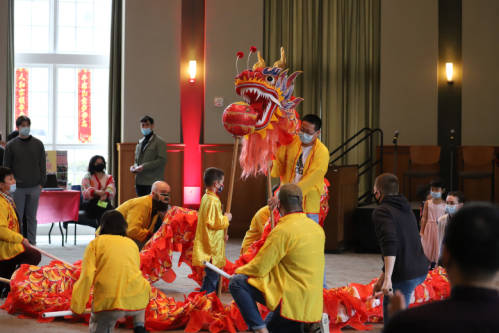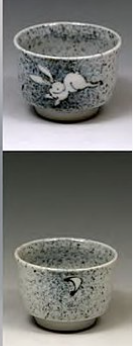By Greta Suiter, Manuscripts Archivist, Ohio University Libraries
Lunar New Year marks the beginning of a new year in the lunisolar calendar. It is most commonly celebrated in China, South Korea, Vietnam, and wherever people from these countries live around the world. When the Lunar New Year takes place varies year to year. The lunisolar year is usually around 11 days shorter than a Western calendar and to make up for this, there is a leap month added in every few years. This year Lunar New Year is celebrated on January 23rd.
Last year there was a Lunar New Year celebration at the Ohio University campus. This event was photographed by Ron Williams and was organized by the Chinese Language Student Association, AAPI (Asian-American and Pacific Islander) Lead, the AAPISU (Asian American and Pacific Islander Student Union), and the Athens Asian American Alliance. Images from the event last year are included in the AAPI Organizations in Athens, Ohio records and are available through the Mahn Center’s digital archives.


Frederick and Kazuko Harris Library Collection.
According to the Chinese zodiac 2023 is the year of the rabbit. Past years of the rabbit were: 2011, 1999, 1987, and 1975.
Looking through the digital collections for images of rabbits I came across the “Porcelain guinomi with rabbit and moon.” This small cup used for sake or tea features a rabbit on one side and a crescent moon on the other.
There are many ancient stories about the rabbit and the moon. Wikipedia has a great article about the moon rabbit and its occurrences in Chinese, Japanese, Korean and Vietnamese folklore. For instance in the Jataka Tales of the Buddha, the rabbit sacrifices himself to a human to eat. The human though turns out to be a god and thanks the rabbit by drawing the outline of a rabbit on the moon as a reminder of the rabbit’s selflessness.
Another rabbit moon story from Chinese folklore features a jade rabbit who lives on the moon with Chang’e, the moon goddess, who stole the elixir of immortality and then fled to the moon. The rabbit is constantly pounding the elixir of life for Chang’e. This story is popular during the Mid-Autumn festival where mooncakes featuring the goddess and rabbit are eaten.
For more information on Lunar New Year see the Smithsonian’s National Museum of Asian Art webpage with activities, information, and virtual events.
Sources:
- “Chinese Horoscope 2023 – Year of the Rabbit”. Retrieved 2023-01-19.
- “Shakyamuni Buddha – Jataka (previous lives) (Himalayan Art)”. www.himalayanart.org. Retrieved 2023-01-19.
- “Chang’e”. Mythopedia. Retrieved 2023-01-19.